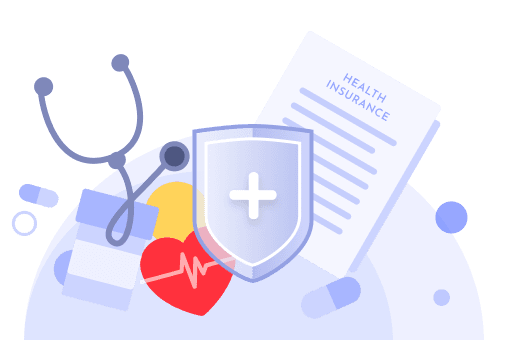Compare the Cheapest or Best Health Insurance for Your Needs
MoneyGeek reviewed hundreds of health insurance quotes to identify the most affordable and dependable providers across metal tiers. While no single insurer is the cheapest for everyone, some consistently offer lower premiums than others.
The best health insurance providers offer a combination of comprehensive coverage, competitive pricing, strong customer support, and a broad network of doctors and hospitals. While affordability is important, the right plan also provides essential benefits, manageable out-of-pocket costs, and reliable service. Comparing options across metal tiers can help you find the best value based on your needs.
Health Insurance Comparison Cost by Metal Tier
Health insurance plans are divided into metal levels—Catastrophic, Bronze, Silver, Gold and Platinum—each with different costs and coverage. Generally, catastrophic plans have the lowest premiums but higher out-of-pocket costs, while Platinum plans offer more coverage at a higher price. Compare the cheapest options by metal level to find a plan that fits your budget and healthcare needs.
Metal Tier | Health Insurance Company | Monthly Cost | Maximum Out-of-Pocket |
|---|---|---|---|
Catastrophic | Oscar | $294 | $9,100 |
Bronze | Oscar | $369 | $9,064 |
Expanded Bronze | Aetna | $377 | $9,017 |
Silver | Aetna | $501 | $8,750 |
Gold | Ambetter | $528 | $7,512 |
Platinum | Blue Cross Blue Shield | $890 | $3,065 |
How We Got Our Rates
MoneyGeek analyzed health plans for consumers aged 18, 26, 40, 50, and 60, with premiums based on a 40-year-old unless noted. We evaluated all metal tiers—Catastrophic, Bronze, Expanded Bronze, Silver, Gold, and Platinum—along with EPO, POS, PPO, and HMO plans. Only insurers operating in at least six states were considered. Our analysis identifies the lowest-cost plans but also factors in deductibles and maximum out-of-pocket expenses, which can impact overall costs. Those earning below 250% of the Federal Poverty Level may qualify for cost-sharing reductions to lower these expenses.
Compare Health Insurance Rates by State
Where you live plays a major role in your health insurance costs due to state regulations, provider competition, and available plan options. Some states have lower premiums due to expanded subsidies or a highly competitive market, while others have higher costs based on local healthcare expenses. Select your state below to compare health insurance plans and find the best coverage for your needs.
How to Compare Health Insurance Quotes
There are three main ways to get health insurance coverage: through your employer, Medicare or Medicaid or your state’s health insurance marketplace. Depending on your situation, a few other less common options are also worth considering, like short-term and direct-to-carrier health insurance.
- 1
Get health insurance coverage through your employer.
Employers are the largest source of health insurance for most Americans. About half of Americans receive health insurance through an employer, whether their own or a family member’s. Purchasing health insurance through an employer tends to be less expensive since employers often cover some of the cost of health insurance premiums.
However, depending on what your employer offers, you may have more limited insurer and policy types options. The biggest downside to receiving health insurance through an employer is that you’re only insured for as long as you’re employed; if you lose your job or change jobs, you’re no longer able to access health insurance coverage through your old plan.
- 2
Get health insurance through the government with Medicaid or Medicare.
Government-backed health insurance coverage — through Medicaid or Medicare — is the second-largest source of healthcare coverage in the U.S., with about one-third of Americans receiving coverage through these programs. These are some of the most affordable health insurance plans out there.
Medicaid covers low-income Americans, but specific eligibility requirements depend on where you live. Some states have expanded Medicaid coverage to include all low-income Americans, regardless of age, parental status or disability. Others have more stringent requirements.
Medicare covers Americans 65 and over, as well as some younger people with disabilities. Coverage involves several different parts, including:
- Part A: Medicare Part A helps cover hospital, hospice and skilled nursing facility stays. It also helps cover home health care.
- Part B: Medicare Part B helps cover outpatient services, doctor’s visits, home health care, durable medical equipment and some preventative services.
- Part C: Otherwise known as Medicare Advantage, Medicare Part C is offered by private insurers and combines Part A and Part B coverage along with other benefits.
- Part D: Medicare Part D helps cover the cost of prescription drugs.
- 3
Consider alternate options, such as direct-to-carrier and short-term health insurance.
Under certain special circumstances, there are a few other types of health insurance options worth considering. Some of these options may not be compliant with the Affordable Care Act or offer the same level of consumer protection as the options outlined above.
- Stay on your parent’s plan: Under the ACA, you can remain on your parent’s health insurance plan until you turn 26.
- Direct-to-carrier insurance: If you prefer not to purchase a plan on the marketplace, you can buy a plan directly from an insurance company.
- Short-term health insurance: Short-term health insurance can help bridge gaps in your insurance coverage (e.g., your coverage stops because you've changed jobs but tends to be expensive and provides limited coverage.
- Health sharing ministry: While not legally considered insurance, health sharing ministries function similarly to an insurance policy but with no guarantee of coverage.
- Military benefits: Military service members and their families are eligible for a health insurance program called TRICARE.
- 4
Compare health insurance on your state’s insurance marketplace.
Suppose you don’t receive health insurance through an employer and aren’t eligible for coverage through a government program like Medicare or Medicaid. In that case, you can still purchase coverage through a health insurance marketplace. The Affordable Care Act made it possible for Americans to shop for insurance coverage either through the state or federal marketplace. Some of the best health insurance plans can be surprisingly cheap.
Depending on your income, you may be able to receive a tax subsidy that lowers the cost of insurance premiums on plans purchased through the marketplace. You must earn between 100% and 400% of the federal poverty level, be a U.S. citizen or legal resident and have no access to other health insurance to qualify for a subsidy.
Compare Health Insurance Quotes
MoneyGeek’s health insurance calculator will give you a ballpark estimate of your cost — It's free to use, requires no personal information and we won't send you any spam.
Although MoneyGeek partners with some of the companies we recommend, our content is written and reviewed by an independent team of writers, editors and licensed agents. Learn more about our editorial policies and expert editorial team.
Frequently Asked Questions About Health Insurance
Compare health insurance quotes for 2025 to find a plan that fits your budget and healthcare needs. Get expert insights and resources to make an informed choice.
About Nathan Paulus

Nathan Paulus is the Head of Content Marketing at MoneyGeek, with nearly 10 years of experience researching and creating content related to personal finance and financial literacy.
Paulus has a bachelor's degree in English from the University of St. Thomas, Houston. He enjoys helping people from all walks of life build stronger financial foundations.



